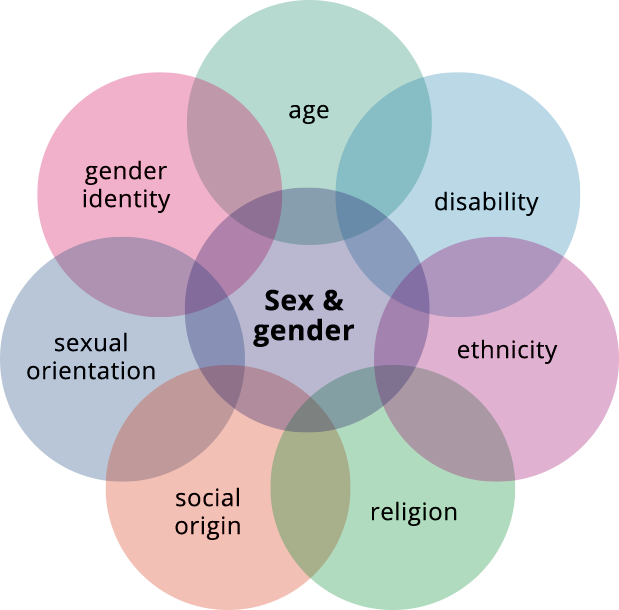Sexism is any expression (act, word, image, gesture) based on the idea that some persons, most often women, are inferior because of their sex.
Sexism is harmful.
It produces feelings of worthlessness, self-censorship, changes in behaviour, and a deterioration in health.
Sexism lies at the root of
gender inequality.
It affects women and girls disproportionately.
Sexism is present in all areas of life.
63% of women journalists have been confronted with verbal abuse
Women spend almost twice as much time as men on unpaid housework (OECD countries)
80% of women stated that they have been confronted with the phenomenon of “mansplaining” and “manterrupting” at work
Men represent 75% of news sources and subjects in Europe
In the UK, 66% of 16-18-year-old girls surveyed experienced or witnessed the use of sexist language at school
59% of women in Amsterdam reported some form of street harassment
In France, 50% of young women surveyed recently experienced injustice or humiliation because they are women
In Serbia, research indicates that 76% of women in business are not taken as seriously as men
Violence sometimes starts
with a joke
Individual acts of sexism may seem benign, but they create a climate of intimidation, fear and insecurity.
This leads to the acceptance of violence, mostly against women and girls.

This is why the Council of Europe has decided to
act by adopting a Recommendation to
prevent and combat sexism.

Sexism affects mostly women.
It can also affect men and boys
when they don’t conform to
stereotyped gender roles.
The harmful impact of sexism can be worse for some women and men due to their ethnicity, age, disability, social origin, religion, gender identity, sexual orientation or other factors.

Some groups of women, for example young women, politicians, journalists or public figures, are particular targets of sexism
of women elected to Parliament have been the target of sexist attacks on social networks








